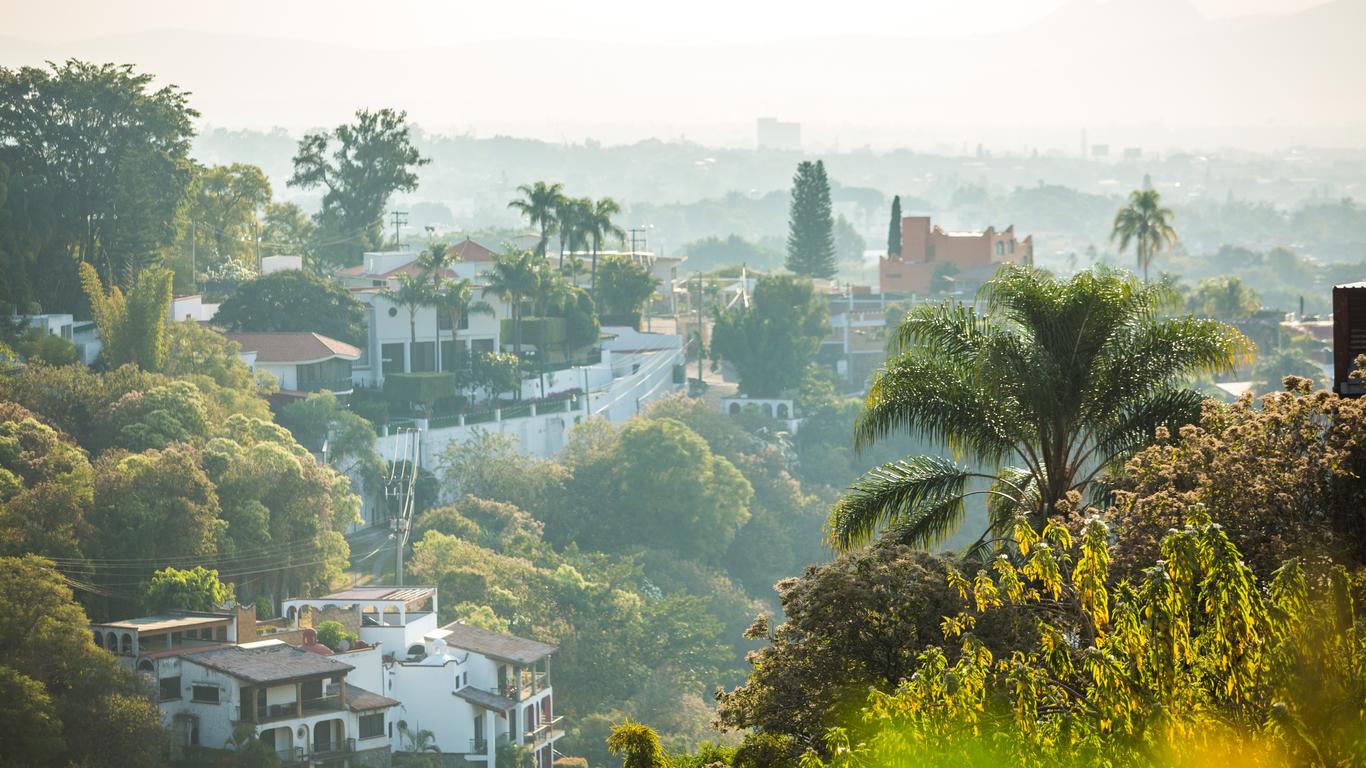Referred to as the “City of Eternal Spring”, Cuernavaca is the capital of Mexico’s Morelos state and lies 84 kilometres to the south of Mexico City. Its pleasant climate, beautiful green spaces and historic architecture make it a popular weekend destination for domestic visitors, as well as being a favourite for those wanting to learn Spanish.
Cuernavaca’s historic heart is the Plaza de Armas where musicians, dancers and acrobats entertain throughout the week, and street vendors serve up Mexican favourites. The Palace of Cortés lies on its eastern edge, built in the Renaissance style by Hernán Cortés in the 1530s and today housing the Museo Regional Cuauhnáhuac which showcases the history of Morelos State. The elaborate Gobiernodel Estado Morelos with its “tezontle” facade is situated on the western edge, adjacent to the Juárez and Morelos gardens which are known collectively as the “zócalo” and often showcase performances of traditional dance and music. Another of Cuernavaca’s most impressive pieces of architecture is its 16th century cathedral, featuring beautiful murals depicting the martyrdom of Philip of Jesus, the first Mexican to be canonised as a saint. Just behind the cathedral is the former home of Robert Brady which today presents an outstanding collection of works by renowned painters such as Frida Kahlo, Rufino Tamayo and Diego Rivera, while the Borda Gardens lie just to the west, together with the Museo de Arte Indígena Contemporáneo. While the historic downtown area contains many of Cuernavaca’s highlights, just to the east is the fascinating Teopanzolco archaeological site which served as an Aztec ceremonial centre during the 15th and 16th centuries.
Cuernavaca is connected to Mexico City and its international airport by numerous private bus services, while the local airport services domestic destinations across the country. Public buses traverse the city, or fixed-price taxis will quickly whisk visitors between sights.
The Tlahuica people have inhabited the land that is now Cuernavaca since at least the 12th century when the ruler of Tetzcoco, Xolotl, conquered the Valley of Mexico. In the 1370s, the first Aztec emperor, Acamapichtli, expanded his empire south into what was then called Tall Nahuatl, with Spanish conquistador, Hernán Cortés, founding the Church of San José and the first sugar plantation here in 1523.





